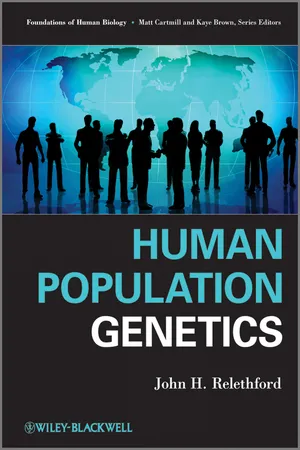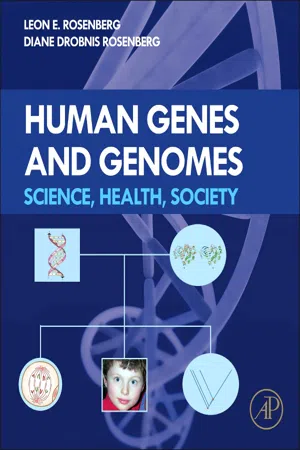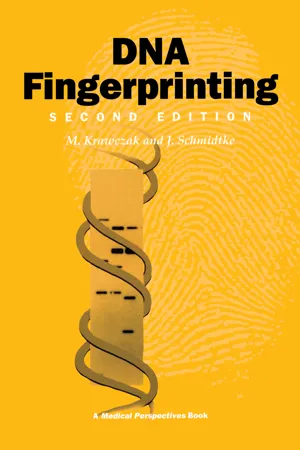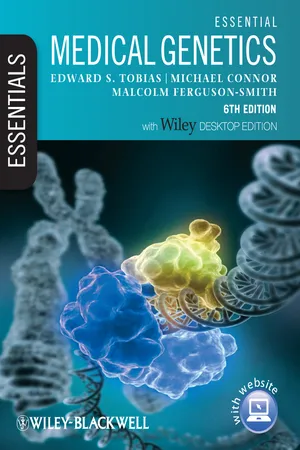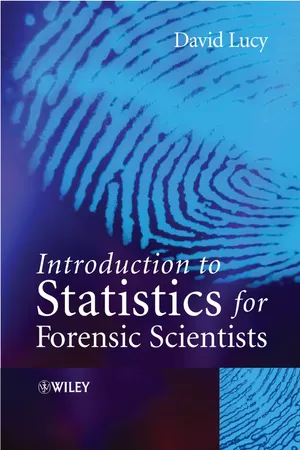Biological Sciences
Allelic Frequencies
Allelic frequencies refer to the relative proportions of different forms of a gene (alleles) within a population. These frequencies are influenced by factors such as genetic drift, natural selection, and gene flow. Understanding allelic frequencies is important in studying genetic diversity, population genetics, and evolutionary processes.
Written by Perlego with AI-assistance
7 Key excerpts on "Allelic Frequencies"
Learn about this page
Index pages curate the most relevant extracts from our library of academic textbooks. They’ve been created using an in-house natural language model (NLM), each adding context and meaning to key research topics.
- eBook - ePub
- John H. Relethford(Author)
- 2012(Publication Date)
- Wiley-Blackwell(Publisher)
Gene flow is the movement of alleles from one population to another accompanying migration of individuals. Gene flow can introduce new alleles into a population, and acts to reduce genetic differences between populations.Appendix 2.1 Proof Showing How Allele Frequencies can be Computed from Genotype FrequenciesAssume a locus with two alleles, A and a , and three genotypes: AA, Aa , and aa . Let N AA , N Aa , and N aa represent the numbers of individuals with genotypes AA, Aa , and aa , respectively. Let N be the total number of all genotypes:The genotype frequencies are obtained by dividing the number of each genotype by the total number of all genotypes, givingA2.1Using the allele counting method, we find that the number of A alleles is equal tobecause we count the homozygote (AA ) twice. We then divide this number by the total number of alleles in the population, which is twice the number of people because each person has two alleles. This givesWe can express this quantity as the sum of two fractions as which reduces toUsing the formulas for genotype frequencies f AA and f Aa from equation (A2.1 ) givesIn similar manner, the frequency of the a allele iswhich givesThe derivation for p and q above lead to equation (2.3 ) in the main (chapter) text.Appendix 2.2 Using the Chi-Square Statistic to Test for Hardy–Weinberg EquilibriumAs shown earlier in this chapter, we can compare observed genotype numbers with the numbers expected under Hardy–Weinberg equilibrium. This allows us to test the hypothesis that the population is at Hardy–Weinberg equilibrium (for the specific locus). We use a chi-square test, a method that is used for comparing observed and expected numbers in statistical research. The chi-square statistic, denoted by the symbol χ2 - eBook - ePub
Human Genes and Genomes
Science, Health, Society
- Leon E. Rosenberg, Diane Drobnis Rosenberg(Authors)
- 2012(Publication Date)
- Academic Press(Publisher)
Table 18.1 ).TABLE 18.1. Terms Used in Population Genetics
Human population genetics,Term Definition Population A group of interbreeding individuals of the same species inhabiting the same space at the same time Gene pool The sum total of all of a population’s alleles Population genetics The quantitative study of the distribution of genetic variation in a population, and of how the frequencies of its alleles are maintained or changed Genotype frequency The proportion of all individuals in a population that are of a particular genotype Allele frequency The proportion of all copies of a given gene in a population that are of a particular allele Phenotype frequency The proportion of all individuals in a population with a particular phenotype - eBook - ePub
- Mark Jobling, Edward Hollox, Toomas Kivisild, Chris Tyler-Smith(Authors)
- 2013(Publication Date)
- Garland Science(Publisher)
Section 10.2). This sampling of groups, rather than of individuals, leads to their being considered as a natural unit of investigation.One type of model we will encounter is a mathematical approximation of populations, their interactions, and mating structures. When the term “population” is being used it is important to be clear how it was defined and whether it refers to individuals grouped together for the sake of analysis, or an idealized group, assumed to be adhering to the assumptions of a mathematical model (for example, randomly mating). In other words, does the term refer to a practical or theoretical entity?The other types of mathematical model are those describing the molecular processes of mutation and recombination, which, as we saw in Chapter 3 , differ between DNA sequences and genomic regions. These enable us to go beyond allelic definitions and allow us to make the connection between molecular diversity and population processes.The Hardy–Weinberg equilibrium is a simple model in population genetics
The Hardy–Weinberg equilibrium (HWE) model describes the relationship between allele frequencies and genotype frequencies in a randomly mating population. In diploid organisms such as humans, two alleles, A1 and A2 , at the same locus, with allele frequencies p and q respectively, can be sorted to make three possible genotypes: A1 A1 , A1 A2 , and A2 A2 . If we know the frequency of these two alleles in a population (p and q) we can predict the proportions of the genotypes in the succeeding generation by combining gametes (which contain single alleles) at random—a postulate known as the Hardy–Weinberg principle.15 - eBook - ePub
- William Goodwin, Adrian Linacre, Sibte Hadi(Authors)
- 2011(Publication Date)
- Wiley(Publisher)
One approach is to set a minimal allele frequency. The minimum frequency values that are used vary from population to population but are typically around 0.01 (1%). Any allele occurring with a frequency of less than 0.01 will be adjusted to this figure. An alternative approach is to use a minimal allele count, for example five alleles being the smallest number of alleles that is considered: the allele frequency is simply calculated using the formula 5/2N, where N is the number of individuals in the database [31]. Simple correction for sampling bias Allele frequency databases are relatively small when compared with the populations from which they are drawn and therefore there remain sampling uncertainties. A simple method for addressing such uncertainties, which are inherent in allele frequency databases, is suggested by Balding [28]. The allelic information in the evidential material is incorporated into the database to adjust for the potential under-representation of alleles. When there are matching DNA profiles there must be two DNA profiles: one from the crime scene and one from the reference sample. The alleles from these profiles are added to the allelic frequency database. By adding both profiles we are making the assumption that the material found at the crime scene did not come from the suspect. If we look at the profile in Table 8.1, at the vWA locus is a heterozygous locus with alleles 14 and 17; these have frequencies of 0.0850 and 0.2500, respectively. By multiplying the allele frequency with the total number of alleles in the database, we can calculate that the numbers of observed alleles in the database are 34/400 for allele 14 and 100/400 for allele 17. We now have two profiles to add to the database; we have seen a total of four new alleles: 14, 17 in the crime scene sample and also 14, 17 in the suspect’s sample. These can be added to the database and the frequency recalculated - eBook - ePub
- M. Krawczak, J. Schmidtke(Authors)
- 2020(Publication Date)
- Taylor & Francis(Publisher)
Table 4.1 .4.1.2 Linkage disequilibrium
Compound genotypes convey much more genetic information than do single-locus data, and would therefore allow a much more refined identification of individuals. However, whereas genotype frequencies may be easy to evaluate for a single locus, the same exercise becomes almost unmanageable for genotypes comprising large numbers of loci. When the number of alleles per locus is (approximately) constant, then the number of possible genotypes increases exponentially with the number of loci included. In order to allow determination of frequency, genotypes at different loci must be stochastically independent of each other. This would imply that the frequency of a compound genotype amounts to the product of the frequencies of its constituents. In reality, however, a variety of factors ensure that this product rule is little more than a useful approximation to the truth. Genotypes at distinct loci are often far from being independent. Instead, some alleles show up together in the same cells more often (or less often) than expected by chance alone, meaning that there is allelic association between loci.One possible reason for allelic association is linkage disequilibrium. As has been described in Section 1.2.4 , the genetic material is not simply a pile of informational components that mix up freely and meet again in germ cells. The DNA is organized in chromosomes, long stretches of DNA that are wrapped in proteins and passed on to future generations almost intact. Therefore, alleles that have been resident on the same chromosome once should be so forever. Although meiotic recombination allows exceptions to this rule (Section 1.2.6), closely linked loci by definition only rarely undergo recombination, and their alleles have a high chance of remaining strung together in the same haplotype during meiosis. Thus, any initial over-representation of one allele in cis - eBook - ePub
- Edward S. Tobias, Michael Connor, Malcolm Ferguson-Smith(Authors)
- 2011(Publication Date)
- Wiley-Blackwell(Publisher)
Appendix 3 Population genetics of single-gene disorders Maintenance of gene frequenciesIn a population, the relative frequencies of different alleles tend to be kept constant from one generation to the next. This can be demonstrated mathematically and helps to explain why dominant traits do not automatically increase at the expense of recessive traits.Consider one autosomal locus with two alternative alleles, A and a. If the frequency of the allele A is p and the frequency of the allele a is q, then the sum of these allele frequencies must be 1, or 100%. Therefore:Table A3.1 shows the frequencies of each genotype at this locus.In the production of the next generation, each of the three types of paternal genotype may mate with each of the three types of maternal genotype (Table A3.2 ). Table A3.3 indicates the genotypes of the offspring for each mating type, and as can be seen, the relative frequency of each remains unchanged and the population is said to be in genetic equilibrium. Although the actual numbers of individuals with each genotype may have increased, the relative proportions of each genotype (and allele) have remained constant (AA at/>2 , Aa at 2pq and aa atq2 ).This principle is called the Hardy–Weinberg law.Table A3.1Allele and genotype frequencies at a locus with two alleles, A and aMaternal gametes Paternal gametes A (p ) a (q ) A (p ) AA (p 2)Aa (pq ) a (q ) Aa (pq ) aa (q 2)Table A3.2Frequencies of different parental genotypes at reproductionThe most important application of this law is the calculation of carrier frequencies for autosomal recessive traits.Table A3.3Frequencies of different types of offspring after reproductionFor any autosomal recessive trait, if q is the frequency of the mutant allele and p the frequency of the normal allele, then the frequency of the recessive homozygote genotype is equal to the square of the mutant allele frequency(q2 ), or the disease frequency (for a condition with childhood onset). Thus, for cystic fibrosis: recessive homozygote frequency,q2=1/1600. Therefore, q = √(l/1600) = 1/40. Consequently, as above, p = 1 — q = 39/40. The heterozygote (carrier geno- type) frequency is 2pq, - David Lucy(Author)
- 2013(Publication Date)
- Wiley(Publisher)
et al. (1999). Reproduced with permissionThe power of DNA is that for a complete sequence of genotypes from a population there will only be a small number of people who will share that same information. However, this is also a problem with DNA because it would be extremely hard work, not to mention illegal in most jurisdictions, to sequence the entire population and store that in some databank. If all DNA profiles were known then it would be a simple matter to see how many matched a crime scene profile and a value of evidence calculated accordingly. However, this is not currently possible and much of the seeming complexity of DNA evidence is directed towards making suitable approximations in the face of incomplete evidence.Most of the reports listing DNA in various populations in the Journal of Forensic Sciences report the relative frequencies of the alleles rather than the genotypes for the loci. What allows the reporting and subsequent calculation of genotype frequencies from alleic frequencies is another independence principle, that of Hardy-Weinberg equilibrium, which is the idea that each allele on a locus appears independently of each other allele on that locus, that is, that one allele, say, A, on the LDLR locus is no more likely to be paired with any other particular allele.14.3 Hardy-Weinberg equilibrium
Underlying Hardy-Weinberg equilibrium is the assumption of an infinite population and random mating. These are not true, and indeed cannot be true in any absolute sense, but are approximations which, with some exceptions, are good enough for forensic purposes.The system from Ülküer et al. (1999) in Table 14.1 is a relatively simple system of five loci, three of which have two possible alleles, two having three possible alleles. Even in this system the locus HBGG which has possible alleles A , B and C , hence six possible genotypes, has two genotypes (BC ,CC ) which have not been observed. This could be because they simply do not exist in the population, or because the sample is based on only 157 individuals from the population. Genotype AC of the HBGG locus occurs once, by substituting 0.006 for γ into Equation 32 on p…. we would have to examine a minimum of 498 individuals to stand a 0.98 probability of observing any individuals which occur with this probability. Some of the more variable loci used in forensic science can have as many as 20 alleles, giving 210 possible genotypes. If each genotype were to occur with a uniform distribution then the probability of occurrence would be 1/210 ≈ 0.005, substituting this into Equation 32
